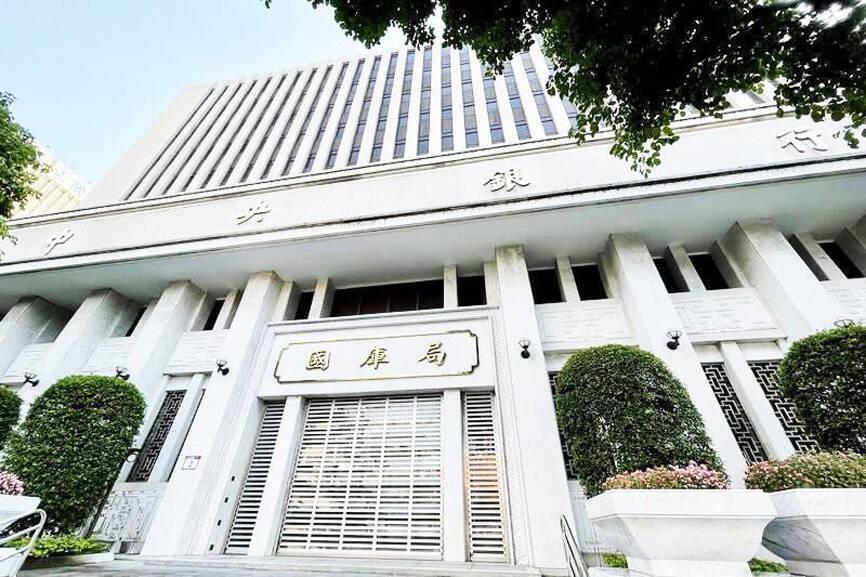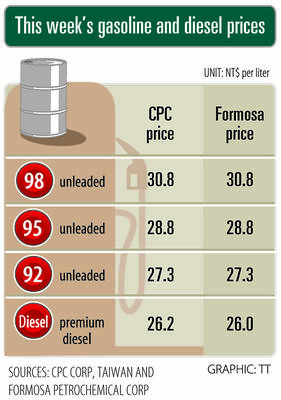The central bank yesterday suggested that the government approach Taiwan’s trade surplus with the US carefully, as the administration of US President Donald Trump plans to introduce reciprocal tariffs to address its trade imbalances with other nations.
Central bank Deputy Governor Chu Mei-lie (朱美麗) is to give a special report to the legislature’s Finance Committee today on potential US tariff hikes and Taiwan’s inclusion on the “Dirty 15” list of trade surplus nations.
Last year, the US recorded a US$73.9 billion trade deficit with Taiwan, making it the sixth-largest trade surplus source after China, Mexico, Vietnam, Ireland and Germany, the central bank said.

Photo: George Tsorng, Taipei Times
The central bank attributed the trade surpluses to intensifying US-China trade disputes and technology competition, the strengthening of cybersecurity and an ongoing artificial intelligence (AI) boom that together have boosted US demand for chips and information communications technology products.
“The vast amount of trade surplus raises concerns over trade frictions with the US,” the bank said.
By measure of simple average calculations, Taiwan’s tariffs are 3.2 percentage points higher than the US, although the gap is lower than that of India, South Korea, Thailand, Vietnam, China and Indonesia, the central bank said, citing WTO data.
However, Taiwan has lower tariffs than the US if judging by trade-weighted average tariffs, providing room for negotiation, it said.
Taiwan imposes relatively high tariffs on US agricultural products than non-agricultural products. It shipped US$890 million of agricultural products to the US last year, while importing US$3.69 billion, resulting in a trade deficit of US$2.8 billion in this sector, the central bank said.
That discrepancy could serve as negotiation leverage on the part of Taiwan during trade discussions, it suggested.
Canada and Mexico would take a hard hit from US tariffs, while Taiwan would see moderate repercussions, according to a study by Standard & Poor’s Global Ratings, after Trump threatened to impose a 25 percent tariff on its neighbors and an extra 10 percent tariff on other trade partners, the central bank said.
The US tariffs, if realized, would slow the world economy this year, the study added.
The US Department of the Treasury has sought to protect US interests and business sectors by releasing a semi-annual currency report in April and October to assess whether major trade partners manipulate their currencies to advance unfair trade practices, the central bank said.
Countries meeting two out of three criteria — a significant trade surplus, a large current account surplus and exchange rate interventions — are placed on the currency watch list, it said.
Taiwan has been on the watch list, but the central bank emphasized Taiwan’s foreign exchange interventions are intended to maintain currency stability rather than gain trade advantages, it said.
Countries that meet all three criteria are subject to economic sanctions.
The central bank said it keeps free and effective communication with the US, adding that the two sides would continue economic and currency policy exchanges based on mutual understanding.

SETBACK: Apple’s India iPhone push has been disrupted after Foxconn recalled hundreds of Chinese engineers, amid Beijing’s attempts to curb tech transfers Apple Inc assembly partner Hon Hai Precision Industry Co (鴻海精密), also known internationally as Foxconn Technology Group (富士康科技集團), has recalled about 300 Chinese engineers from a factory in India, the latest setback for the iPhone maker’s push to rapidly expand in the country. The extraction of Chinese workers from the factory of Yuzhan Technology (India) Private Ltd, a Hon Hai component unit, in southern Tamil Nadu state, is the second such move in a few months. The company has started flying in Taiwanese engineers to replace staff leaving, people familiar with the matter said, asking not to be named, as the

The prices of gasoline and diesel at domestic fuel stations are to rise NT$0.1 and NT$0.4 per liter this week respectively, after international crude oil prices rose last week, CPC Corp, Taiwan (台灣中油) and Formosa Petrochemical Corp (台塑石化) announced yesterday. Effective today, gasoline prices at CPC and Formosa stations are to rise to NT$27.3, NT$28.8 and NT$30.8 per liter for 92, 95 and 98-octane unleaded gasoline respectively, the companies said in separate statements. The price of premium diesel is to rise to NT$26.2 per liter at CPC stations and NT$26 at Formosa pumps, they said. The announcements came after international crude oil prices

STABLE DEMAND: Delta supplies US clients in the aerospace, defense and machinery segments, and expects second-half sales to be similar to the first half Delta Electronics Inc (台達電) expects its US automation business to remain steady in the second half, with no signs of weakening client demand. With demand from US clients remaining solid, its performance in the second half is expected to be similar to that of the first half, Andy Liu (劉佳容), general manager of the company’s industrial automation business group, said on the sidelines of the Taiwan Automation Intelligence and Robot Show in Taipei on Wednesday. The company earlier reported that revenue from its automation business grew 7 percent year-on-year to NT$27.22 billion (US$889.98 million) in the first half, accounting for 11 percent

A German company is putting used electric vehicle batteries to new use by stacking them into fridge-size units that homes and businesses can use to store their excess solar and wind energy. This week, the company Voltfang — which means “catching volts” — opened its first industrial site in Aachen, Germany, near the Belgian and Dutch borders. With about 100 staff, Voltfang says it is the biggest facility of its kind in Europe in the budding sector of refurbishing lithium-ion batteries. Its CEO David Oudsandji hopes it would help Europe’s biggest economy ween itself off fossil fuels and increasingly rely on climate-friendly renewables. While